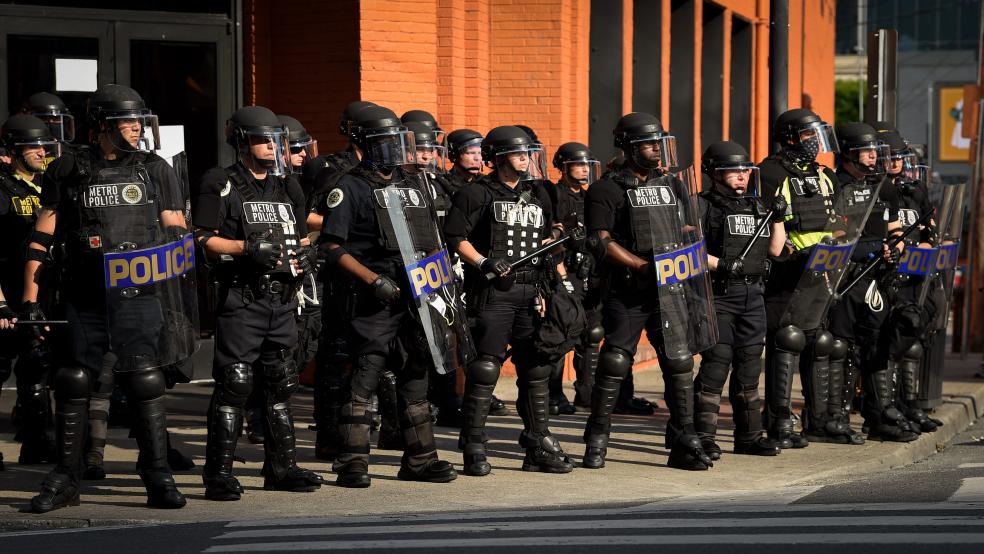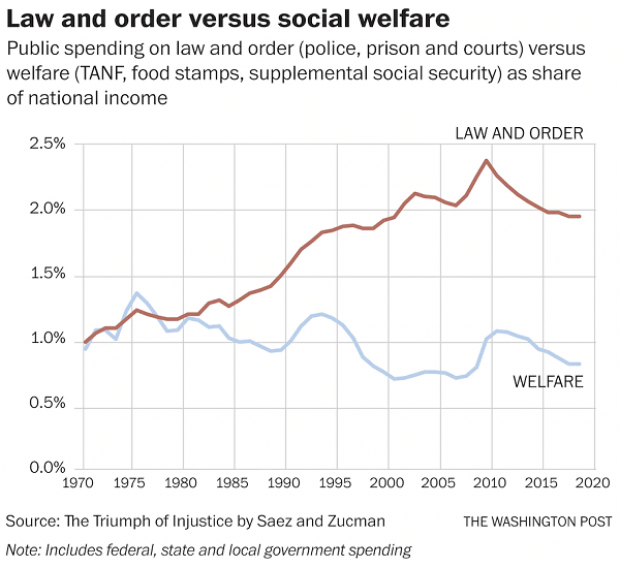The Washington Post’s Christopher Ingraham writes that, in the wake of protests over George Floyd’s death, tensions over funding differences for police departments and social services lie at the heart of many calls for police reform.
New York City Comptroller Scott Stringer, for example, is calling for a $1.1 billion cut in NYPD spending over the next four years, with the money going “toward vulnerable communities most impacted by police violence and structural racism.” Similarly, the Los Angeles Police Department budget could be cut by $150 million to reinvest in communities of color, the L.A. Times reports.
To illustrate the nationwide divergence between funding for law and order and that for cash welfare, Ingraham highlights a statistic, detailed in the chart below, pulled from the work of liberal Berkeley economists Emmanuel Saez and Gabriel Zucman: The United States spends more than twice as much on police, prisons and the courts as it does on food stamps, Temporary Assistance for Needy Families and supplemental Social Security.
That wasn’t always case, Ingraham explains:
“Up until about 1980, American governments spent roughly the same amount on criminal justice and cash welfare: a little over 1 percent of total national income for each. But those trend lines have steadily diverged ever since: Welfare spending has been on a long, uneven decline, while law and order spending ballooned almost unabated until about 2010, when it amounted to nearly 2.5 percent of national income. Since then, law and order spending has fallen to a hair under 2 percent, while welfare spending stands at about 0.8 percent of national income. …
“Taken together, the two lines trace a dramatic shift in national priorities. We funneled money away from poverty prevention to beef up our response to one of poverty’s biggest consequences: crime. We now treat the symptoms rather than the underlying disease.”
The protests and debates now roiling the nation might change that balance, as they’ll likely color the budget choices made by cities, states and the federal government.





